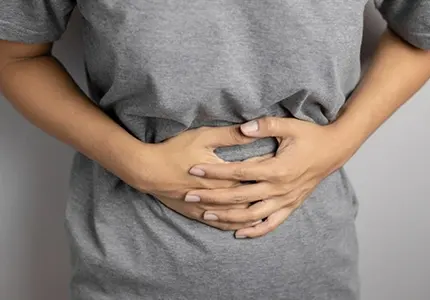- Herniated Disc
- Nerve Pain
- Lower Back Pain
- Abdominal Pain
- Neck Pain
- Sciatica
- Spinal Stenosis
- Pinched Nerve
- Neuropathy
- Joint Pain
- Complex Regional Pain Syndrome
- Facet Joint Pain
- Facet Syndrome
- Spinal Arthritis
- Degenerative Disc Disease
- Fibromyalgia
- Myofascial Pain Syndrome
- Phantom Limb Pain
- Cancer Pain
- Headaches and Migraines
Service Reviews
- Lisa Cooke Ansah. / Google
"Dr Wang and his staff are very kind and professional. He is one of the best doctors that takes time with his patients. I’m very grateful I have found a doctor like him. Thank You"
About Abdominal Or Pelvic Pain
Chronic Pelvic Pain (CPP) is one of the most common pain problems affecting women. Pelvic pain that lasts for at least 6 months or more is considered chronic. It may be a steady pain or a pain that comes and goes with the menstrual cycle. The pelvic pain symptoms may start with a physical problem that heals or seems to disappear, but the pain continues because of changes in the nervous system, muscles, or other tissues. Over time, the pain can affect the muscles of the abdomen, pelvis, urinary tract, and bowels, leading to changes in bowel and bladder function. The area’s connective tissue, and the skin of the pelvic area may also become painful. The persistent pain can cause limited mobility, depression, and emotional problems. Causes can include, but are not limited to, endometriosis, pelvic congestion syndrome, muscle spasm and cystitis.

Endometriosis
Endometriosis occurs when the tissue that normally only lines the inside of your uterus grows outside of the uterus. This tissue breaks down and bleeds with each menstrual cycle along with the tissue inside of the uterus, leading to increased pelvic pain during menstrual cycles, and intercourse. It can also cause heavy vaginal bleeding and infertility. Endometriosis treatment includes analgesics, hormonal contraceptives, other hormone therapies, and possible surgery.
Post-Surgical Pain
This is pain that persists beyond the normal healing period not due to infection or any continuing surgical problem. Typically this is due to prolonged avoidance of normal body motions causing secondary muscle shortening and spasm. It can also be due to the normal potential trauma of nerves that can occur with many surgeries — "neuropathic pain."
Pelvic Floor Dysfunction
Pelvic Floor Dysfunction relates to problems with the muscles of the pelvic floor. The pelvic floor is a group of muscles under the pelvis that are responsible for ensuring continence and give support to the intestines, bladder, and uterus. When the muscles become too weak or tight, patients may experience pelvic pain, constipation, feelings of incomplete emptying of the bowel or bladder or both, organ prolapse, and sexual intercourse dysfunction. The most common cause is pregnancy but can also be due to obesity and menopause. The mainstay of treatment is physical therapy to relax and strengthen the muscles, as well as the use of pelvic floor biofeedback. Weight loss is another important aspect of treatment.
Vulvodynia
Vulvodynia is chronic pain in the vaginal area. The exact cause of this disorder is unknown but could be related to previous vaginal infections, hormonal changes, allergies, or injury to the nerves in the surrounding area. Symptoms include burning, throbbing pain, sensitivity to touch, itching, and painful intercourse. Treatment includes medications for nerve pain (tricyclic antidepressants and anti-seizure medications), biofeedback, nerve blocks, exercises to strengthen the pelvic floor, and possible surgery.
